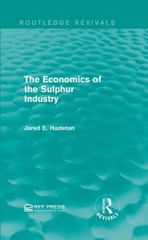D Question 1 1 pts When a firm produces output, O the value of the output produced is included in GDP. O the firm's output contributes to GDP only to the extend that there is value-added by the firm. O the firm's output will not count as GDP if it is stored in inventory. O the firm's output will not count as GDP if it is exported.Question 2 1 pts GDP could inaccurately measure the value of aggregate output because it may not properly account for C}: production in the underground economy and the true value of government production. D the true value of government production and the proper value of purchases and sales of used goods. C}: the proper value of purchases and sales of used goods and depreciation of consumer durables. C}: the depreciation of consumer durables and production in the underground economy. The calculation of real GDP allows us to C} separate consumption and investment spending. C} adjust for underground economic activity. C} adjust for die change in the quality:r of output over time. C} compare national output across periods of time. Question 4 1 pts If the correlation between real GDP and macroeconomic variable y is -0.75, we say that y is O procyclical. O acyclical. O countercyclical. O leading. O lagging.Question 5 1 pts If a macroeconomic variable x is useful for predicting future GDP, then O x is coincident. O x is a lagging variable. O x is countercyclical. O x is a leading variable.Question 6 1 pts Business cycle persistence refers to the property that C} real GDP is rarely exactly on trend. {j booms and recessions last for a long time. C} when real GDP is above trend, it tends to stay above trend. and when it is below trend. it tends to stay below trend. C} business cycles are persistently difcult to predict. Assuming consumption and leisure are both normal goods and holding all else constant. after an increase in the real dividend income the representative consumer will O increase consumption and increase labor supply. (:3: increase consumption and reduce labor supply. C} reduce consumption and increase labor supply. 0 reduce consumption and reduce labor supply. A rm's production function describes the D possibilities for converting factor inputs into output given available technology. C} intellectual possibilities for converting factor inputs into output. C} amount of resources available to the rm. D the process used to convert factor inputs into output














